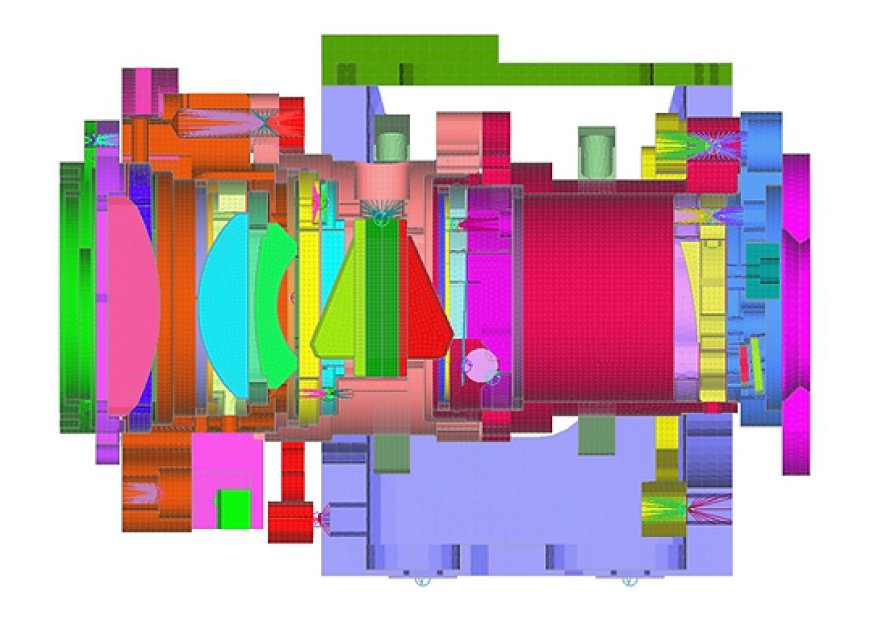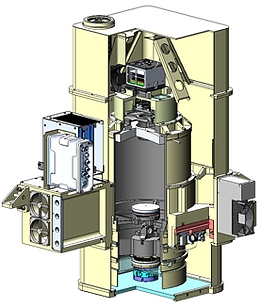Comprehensive Guide to Optical Systems Designing: Innovations in Optical Design Engineering
Optical systems designing, guided by optical design engineering, plays a vital role in many high-tech industries.


Optical systems designing is at the heart of modern technology across fields, from aerospace and defense to medical imaging and industrial applications. As the demand for advanced optics grows, so does the need for specialized optical design engineering, which includes everything from lens design to imaging systems and laser communications. Quartus Engineering is a prominent player in this arena, known for its expertise in developing and delivering high-performance optical systems tailored to diverse operational environments. This article explores the essentials of optical systems designing, the role of optical design engineering, and Quartus Engineering’s contributions to this vital field.
Introduction to Optical Systems Designing
Optical systems designing involves creating precise assemblies of optical components, such as lenses, mirrors, and prisms, to control light behavior for specific applications. This complex process requires knowledge of optics, physics, materials science, and engineering principles to ensure systems meet stringent performance criteria.
Optical design engineering is the backbone of this field, enabling the transformation of theoretical principles into tangible systems. These systems must meet critical parameters for use in environments as varied as space exploration, medical imaging, and industrial machinery.
Key Components of Optical Systems Designing
The field of optical systems designing is broad, encompassing several specialised components and techniques to meet diverse requirements. Some of these components include:
-
Lens Design
Lens design is foundational in optical systems. Engineers calculate shapes, materials, and coatings to create lenses that minimise aberrations and achieve precise image clarity. Quartus Engineering’s lens design expertise spans various types, including wide-field-of-view (WFOV) and narrow-field-of-view (NFOV) imaging systems, making them suitable for different applications from astronomical telescopes to consumer electronics. -
Laser Systems
Laser systems are integral to modern optics, especially in communication, military, and industrial fields. Quartus Engineering works with a variety of laser systems, covering wavelengths from visible light (VIS) to extreme ultraviolet (EUV/DUV), near-infrared (NIR/MWIR), and long-wave infrared (LWIR). Each system requires custom design parameters based on power, coherence, and wavelength. -
Imaging Systems
Imaging systems transform light into visual data, serving sectors like medical imaging, surveillance, and autonomous vehicles. Quartus specialises in creating both WFOV and NFOV imaging systems that allow for accurate and detailed image capture over large or focused areas. -
Diffractive Optical Elements
Diffractive elements manipulate light by causing it to interfere with itself, a method highly useful in laser systems for applications such as holography and spectral imaging. Diffractive elements in optical systems design require precise engineering, as they influence wavelength selection, resolution, and focus. -
Free-Space Laser Communications
Free-space optical communications (FSO) utilize laser beams to transmit data wirelessly, a technology crucial for space and airborne systems. The design must account for atmospheric disturbances, alignment accuracy, and thermal stability, all of which are areas where Quartus Engineering excels. -
Astronomical Telescopes and Instruments
Designing telescopes for astronomy involves optical systems capable of capturing extremely faint light from distant celestial objects. Quartus leverages advanced optics and structural support to produce stable and high-resolution telescopes, essential for both ground-based and space-based observations. -
Display Technologies and Holography
Optical systems for display technologies require precise illumination control to provide clear and vibrant visuals. Quartus Engineering’s experience with large-format holographic recording systems further strengthens its role in designing systems for high-resolution display and complex data visualisation.
The Importance of Structural, Thermal, and Optical (STOP) Analysis in Optical Design Engineering
For any optical system, structural, thermal, and optical (STOP) analysis is a critical part of the design process. STOP analysis ensures that the system maintains optimal performance under various environmental conditions, such as vibration, temperature fluctuations, and structural stresses. Quartus Engineering has a proprietary opto-mechanical analysis tool that integrates optical performance with structural and thermal response models. This unique approach allows engineers to fine-tune optical systems to minimise errors like wavefront distortion, encircled energy degradation, and entrance pupil wander.
Through STOP analysis, Quartus can predict system performance more accurately and optimize mounting support, thereby reducing surface figure errors. This enables the creation of optical systems that maintain performance across a wide range of operational scenarios, which is essential in fields where equipment is subject to harsh conditions, like aerospace or military applications.
Detailed Optical Engineering Capabilities at Quartus Engineering
Quartus Engineering’s approach to optical design engineering leverages advanced tools and methodologies to ensure precision. Below are some of the company’s detailed optical engineering capabilities:
-
Software Tools: Quartus uses leading optical design software such as Zemax, CODE V, and FRED, which allow for precise simulations and modeling.
-
Advanced Coding and Simulations: Custom algorithms, atmospheric propagation models, and interferometric simulations provide accuracy in complex optical designs.
-
Image Processing and LIDAR Point Cloud Generation: LIDAR is crucial in creating 3D models, essential for applications like autonomous navigation and environmental mapping.
-
Holography Design and Recording: Holography requires precise control over light to record and reproduce 3D images, which is significant for display technology and data storage.
-
Illumination Modeling and Stray Light Analysis: Controlling light distribution and minimising unwanted reflections are essential for applications in both imaging and laser systems.
Markets Served by Optical Systems Designing
Optical systems have wide applications across various industries, each with unique needs:
-
Government and Military: Used in surveillance, communication, and targeting systems, where performance and reliability are paramount.
-
Industrial and Consumer Applications: Found in everything from barcode scanners to consumer electronics, where cost-effective yet precise optics are essential.
-
Medical Imaging: Optical systems help in creating high-resolution images for diagnostic equipment like MRI and CT scanners.
-
Aerospace and Space-borne Applications: Optical systems for satellites and space telescopes are designed to endure extreme conditions and provide accurate data for scientific research.
Innovative Solutions and Lifecycle Support
Quartus Engineering provides complete engineering support throughout the entire lifecycle of optical systems, from concept development to production delivery. Their integrated approach includes:
-
Opto-Mechanical Analysis: The integration of structural, thermal, and optical modelling to ensure robustness.
-
Atmospheric Propagation Modeling: Predicts how environmental factors like humidity and temperature affect system performance.
-
Algorithm Development for Software/Firmware: Custom algorithms for optimising system efficiency.
-
Manufacturing and Production: Finalising designs for mass production, including system integration and quality control testing.
Conclusion
Optical systems designing, guided by optical design engineering, plays a vital role in many high-tech industries. Quartus Engineering’s extensive expertise—from laser systems to holography and telescope design—enables it to provide customized solutions that meet stringent industry requirements. Their experience in Structural, Thermal, and Optical (STOP) analysis ensures that optical systems are reliable and effective across operational environments, while their advanced optical modeling and prototyping capabilities set them apart in the field. Through innovative optical engineering and comprehensive lifecycle support, Quartus Engineering continues to advance the boundaries of optical technology, meeting the evolving needs of government, industry, and consumers alike.

 RickyPeterson
RickyPeterson